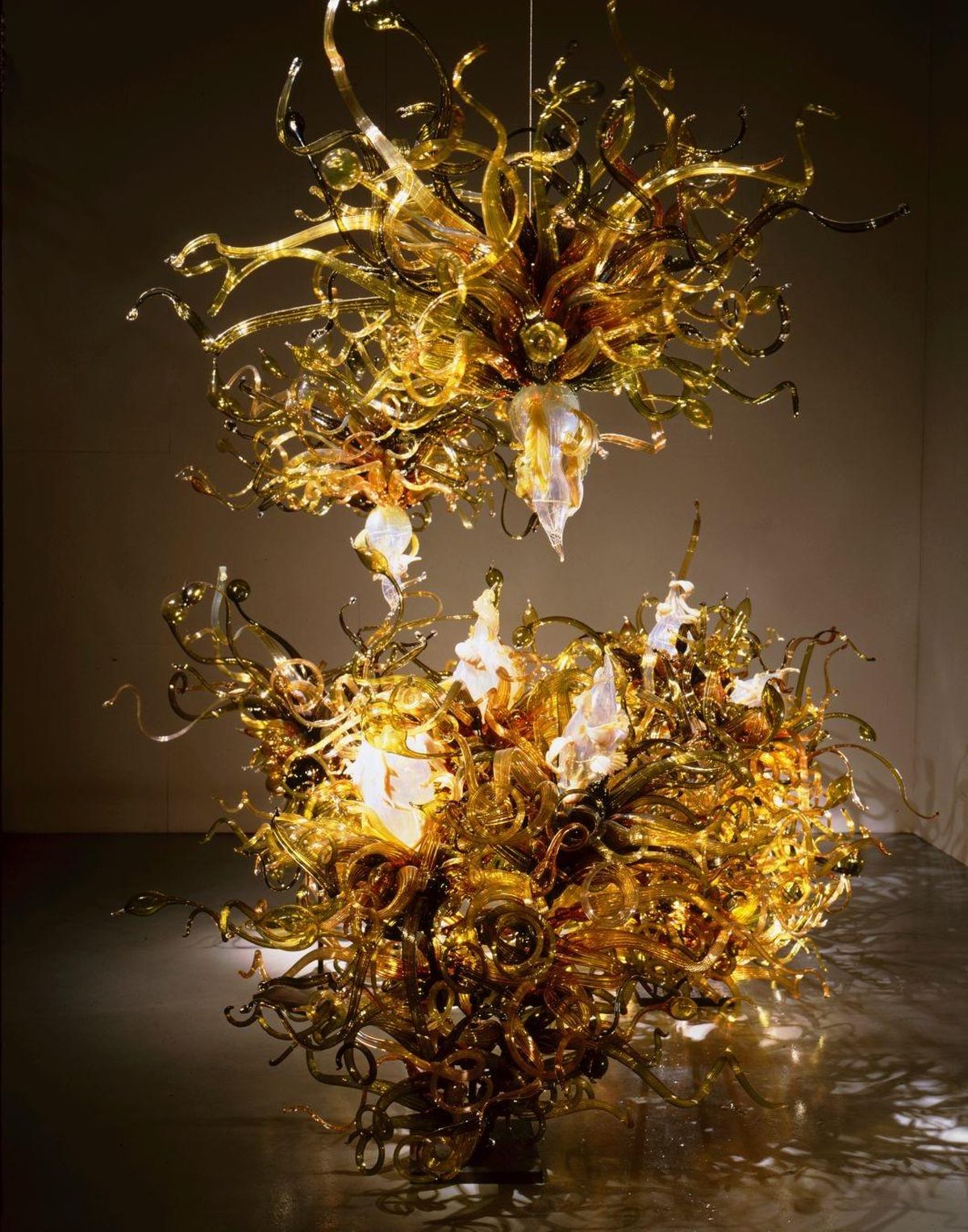Keep it glassy: ‘Luminous’ exhibit brings Tacoma’s Museum of Glass to Spokane’s MAC

In the summer of 1971, glass artist Dale Chihuly drove about an hour outside of Seattle to Stanwood, to join up with other “hippies” looking to explore glassblowing together. Chihuly believed that breathing down a heavy metal tube to form a bubble inside a molten blob of hot glass was a group effort. John and Anne Gould Hauberg were the patrons who helped share the load by donating some land and funds to fuel Chihuly’s vision.
John Hauberg described Chihuly’s arriving entourage that summer as a ragtag “artists’ commune,” according to a 1993 New York Times article. The small group consisted of “an architect, a cowboy poet, a glass artist and a photographer,” Hauberg was quoted as saying that they were “given to living in vans.”
From those counter-culture beginnings, a one-summer glassblowing workshop on a rainy and rugged tree farm became the world’s most comprehensive center for glass art education, known as the Pilchuck Glass School, still going strong today. In the 13th century, glassmaking was a secretive craft concentrated on the Venetian island of Murano. Nearly 700 years later, starting in the latter half of the 20th century, the making of glass has become a wide open frontier of artistic expression emanating from the Pacific Northwest.

According to his website, Chihuly embraced new techniques and a communal model of glassblowing. His inspiration came from modern cultural and political contexts, including rejecting traditional Euro-American artistic conventions in favor of alternative Native American models. American glass art in general expanded its associations with indigenous cultures that had been marginalized by the political establishment.
Over the past five decades, thousands of artists interested in glassmaking have flocked to the Northwest, cementing the region’s reputation as a modern Mecca for glass. In 2002, the Museum of Glass opened in Chihuly’s hometown of Tacoma and has become the West Coast’s largest glass studio and workshop.
The resulting works made by the visiting artists to the Museum of Glass make up the bulk of a new exhibition opening this Saturday at the Northwest Museum of Arts and Culture. The show, “Luminous: Dale Chihuly and the Studio Glass Movement,” features works by 33 international artists working in glass, including a single show-stopping installation, the Laguna Murano Chandelier, created by the tendril-loving godfather of glass himself.
“We’ve never had an entirely glass exhibition at the MAC, yet right across the state (in Tacoma) there is a treasure trove for us,” said Wes Jessup, the MAC’s executive director. “The idea with this show was to bring a variety of work, work that shows the breadth of the studio glass movement, everything from more traditional containers and masters of color … to more boundary-pushing and experimental works.”
Jessup curated “Luminous” by requesting pieces from the Museum of Glass’s permanent collection. The Chihuly piece came from a private collector.
“We have a host of traveling exhibitions, but this is only the second time we have had an exhibition this large curated out of our permanent collection and sent to another museum,” said Rebecca Engelhardt, collections and exhibitions manager at the Museum of Glass. “The first was to the National Glass Center in the U.K.”
Since 2009, the Museum of Glass has operated a fully functioning hot shop with four glassblowers on staff who support artists in their explorations of glassmaking. Artists from all over the world travel to the MOG for residencies designed to hone their skills or attempt to learn new ones. The only requirement for visiting artists is that they leave one piece behind for the MOG’s permanent collection.
“It give us an interesting variety of things,” Engelhardt said. “We get artists who are veterans in glass, or experienced artists who have never touched glass before, but who use our staff artists to make their vision. And of course, we get emerging artists.”
The richness of the MAC’s all-glass exhibition lies in its variety and breadth. Among the more than 30 artists whose work will be shown is Seattle-based glass artist Erich Woll, whose delightful piece “Mistakes Will Be Made” depicts a gaggle of sleek-necked blue-footed boobies. One of the most important glass artists living today, Murano-born Lino Tagliapietra, has a large piece of grouped vessels on a fabricated table that forms what he calls “Manhattan Sunset.”
Preston Singletary, whose art has become synonymous with the relationship between European glass blowing traditions and Northwest Native art, features a “Killer Whale” with mystical sand-carved Tlingit designs. Contemporary glass movement pioneer Therman Statom’s wall of glass boxes are painted and filled with found objects.
Just these pieces alone would be reason enough to head to the MAC. The fact that there are dozens more works by other artists on the forefront of the glass movement makes “Luminous” more than a must-see. It’s a cause for celebration. Just don’t wave your arms too wildly among all those breakables.
“The show is like a snapshot of what has been happening in glass for the past 10 years,” Jessup said.
“We are excited to share the collection with the rest of the state,” Engelhardt said. “We want people to appreciate the medium of glass; it’s still kind of the new kid on the block.”